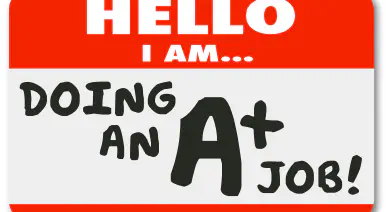The Best Customer Service Starts with Upper Management
Here is a staggering statistic about customer service: 78 percent of bad customer service experiences prevent a transaction from being completed. That is a large portion of revenue lost over situations that are avoidable.
Ask any business that prides itself on its customer service and you’ll get a long laundry list of how to implement great customer service. Yet, great customer service is not something that is simply picked up. It must be taught, upheld, and ingrained in every facet of the organization. Companies must learn this – or risk getting left in the dust by competitors that do get it.
Good Service Starts with Knowing the Customer
Understanding what your customer base expects from your company is the first step towards a successful customer service model and happy customers. The best way to bridge any gap is to align your company perceptions of what great customer service is to what your customer base expects.
This is different from simply making sure that the products and services your company delivers are the best on the market at a competitive price. Organizations that have a great product can still tank if they don’t approach customer service the way customers expect them to.
Trickle-Down Customer Service Effect
The trickle-down customer service effect begins with upper management and works its way down to the new-hire who works in the store front. Managers who have taken the time to understand customer expectations have an advantage because they have learned the best form of customer service to help their company grow.
CEOs or upper-level management at companies who have been in business for decades may not have had the experience of working with customers in years, and there are a handful of executives who have never held a customer-service position. This gap in understanding can hinder any policies created and passed down to employees on the front line. Management must find ways to approach customer service on a unique level.
Every company should have a basic customer service model set up, with specific procedures written out to be implemented when the occasion arises. A basic model includes:
- Greeting every customer at the door;
- Understanding the customer experience;
- Listening to the customer and providing clear feedback;
- Giving helpful suggestions to customers;
- Informing customers about special promotions; and
- Acting on feedback from your customer-facing employees
Once you have defined what great customer service will be for your company, it should be ingrained in every level of the organization. Once employees feel like they are listened to and understood, they will begin to treat customers with the same amount of attentiveness. A companywide standard will then be set, and it isn’t just an ideology, rather a philosophy that everyone understands and believes in.
After a set list of procedures has been standardized throughout the company, employees won’t have to constantly second-guess how they should approach problems or dissatisfaction brought to them by customers. As employees encounter customer service problems, then they can begin creating solutions that can resolve more complicated issues. The only way that an employee can continuously implement positive customer service is if they are empowered to do so by the company and their managers.
Freedom to Serve Equals Empowerment
Empowerment allows employees to make confident and informed customer service decisions that enable them to wow the customer and wipe out any negative experience with a positive one.
Are you approaching your customer service in the right way? Ask your customers directly and learn which areas need improvement with customer surveys from NBRI. Contact us today for more information!




























 By submitting this form you agree to our
By submitting this form you agree to our